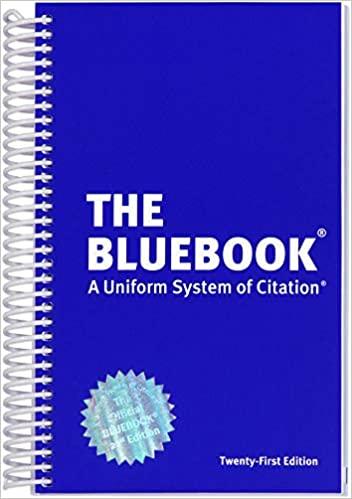Question
Section 1 159.All else equal, the ____________ a price ceiling is set ____________ the equilibrium price, the ___________ deadweight loss is created by the policy.
Section 1
159.All else equal, the ____________ a price ceiling is set ____________ the equilibrium price, the ___________ deadweight loss is created by the policy. (A) Further; below; less (B) Further; below; more (C) Further; above; more (D) Closer; above; less (E) Closer; below; more
160.A competitive market produces the equilibrium quantity that maximizes total surplus because for the last unit exchanged, the ____________ is equal to the ___________. (A) Total utility consumers receive; total profit producers earn (B) Total revenue producers earn; total cost producers incur (C) Marginal utility consumers receive; price consumers pay (D) Price consumers are willing to pay; marginal cost producers incur (E) Consumer surplus; producer surplus
161.When competitive markets are freely allowed to come to equilibrium, __________ is achieved. (A) Allocative efficiency (B) Deadweight loss (C) Price maximization (D) Productive efficiency (E) Price-control efficiency
162.Which of the following statements are correct? I. Price controls create deadweight loss because for the last unit exchanged, willingness to pay exceeds marginal cost. II. A competitive market produces an equilibrium price that efficiently allocates resources to the market. III. Price controls are the only source of deadweight loss in markets. (A) I only (B) II only (C) III only (D) I and II only (E) II and III only
163.An excise tax is a tax that (A) Is regressive (B) Is progressive (C) Taxes each unit of production (D) Is a tax placed on buyers (E) Is a tax placed on sellers.
164.The term __________ refers to the distribution of a tax burden on buyers and sellers.
165
Even though either the buyer or seller is taxed, both will share part of the burden of a tax (for this reason, your instructor also may have referred to this as the "tax burden"). Lump sum taxes are __________, but also more __________ than other taxes such as excise or sales taxes. (A) Efficient; inequitable (B) Progressive; regressive (C) Proportional; efficient (D) Inefficient; equitable (E) Regressive; inefficient
166.Which of the following statements would be a positive economic definition of a regressive income tax? (A) A regressive tax is a tax that is unfair to lower income workers. (B) A regressive tax is a tax that is unfair to higher income workers. (C) A regressive tax is a tax that will increase by a greater amount than income increases. (D) A regressive tax is a tax that will increase by a smaller amount than income increases. (E) A regressive tax is a tax that is the same for all income earners.
167.
In the nation of Xela, income tax is 10% on the first $10,000 in income earned, 15% on the next $20,000 earned, and 30% on all income earned above that amount. Which of the following could be used to describe the taxes in Xela? I. Xela has a marginal tax system II. Xela has a progressive income tax III. Xela has a regressive income tax (A) I only (B) II only (C) III only (D) I and II only (E) I and III only 168.As the amount of an excise tax rises, the total amount of tax revenue will (A) Increase (B) Decrease (C) Increase, then decrease (D) Decrease, then increase Be constant
169.An excise tax is levied on sellers of televisions. Who will bear the incidence of tax in the market for televisions? (A) The entire tax incidence will be paid by sellers regardless of the elasticities of the supply or demand curve. (B) The sellers will bear a higher burden of the tax than the buyers if the demand curve is less elastic than the supply curve. (C) The sellers will bear a higher burden of the tax than the buyers if the demand curve is more elastic than the supply curve. (D) The entire tax incidence will be paid by buyers regardless of the elasticities of the supply or demand curve. (E) The tax incidence will be split equally between the buyers and sellers regardless of the elasticities of the supply or demand curves.
170.At a particular quantity, the price elasticity of supply is 3 and the price elasticity of demand is 2. Which if the following is true about the incidence of an excise tax at that quantity? (A) The tax incidence will depend on whom the tax is levied. (B) The buyers will pay a higher incidence of the tax. (C) The sellers will pay a higher
Step by Step Solution
There are 3 Steps involved in it
Step: 1

Get Instant Access to Expert-Tailored Solutions
See step-by-step solutions with expert insights and AI powered tools for academic success
Step: 2

Step: 3

Ace Your Homework with AI
Get the answers you need in no time with our AI-driven, step-by-step assistance
Get Started


